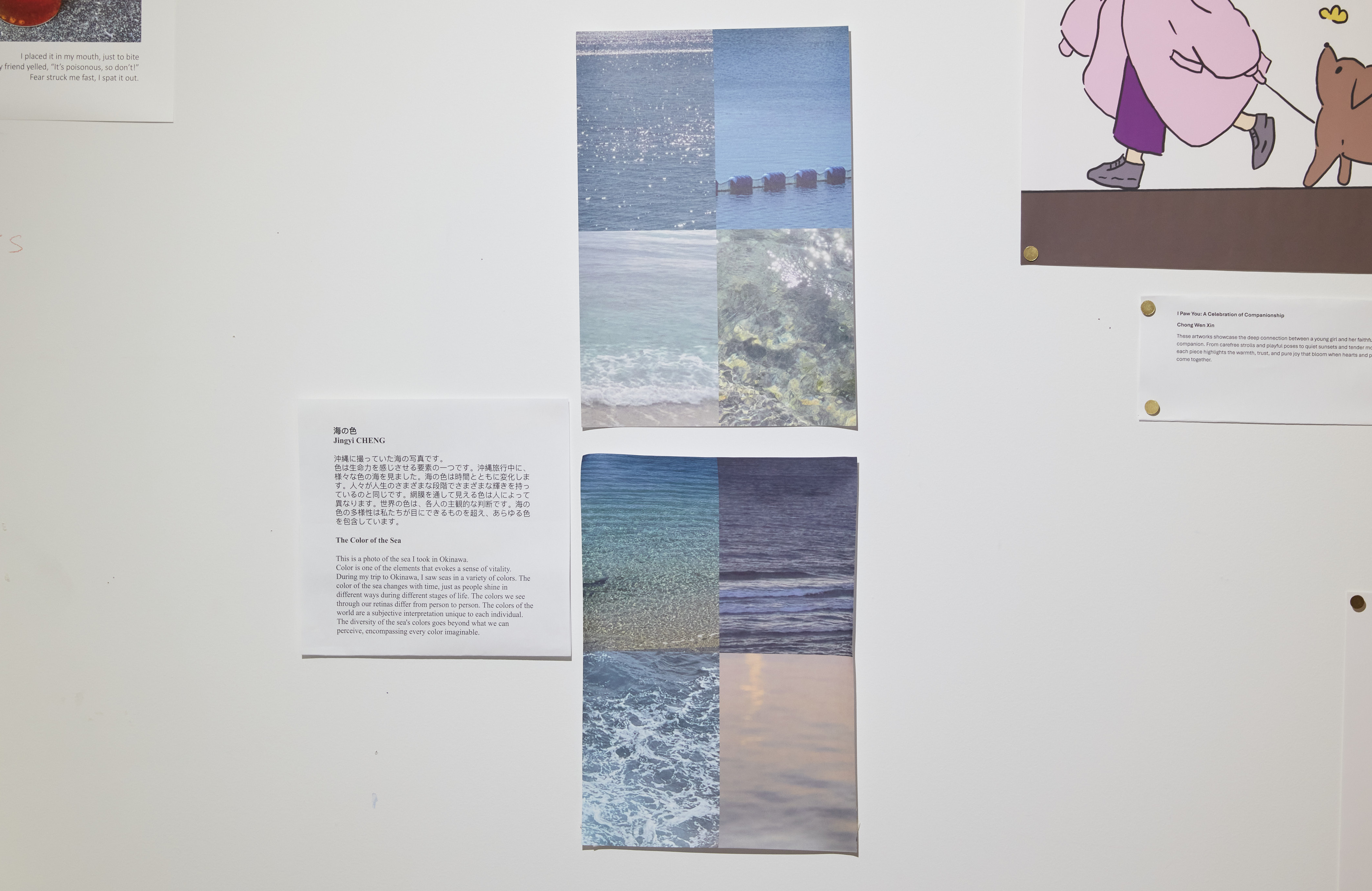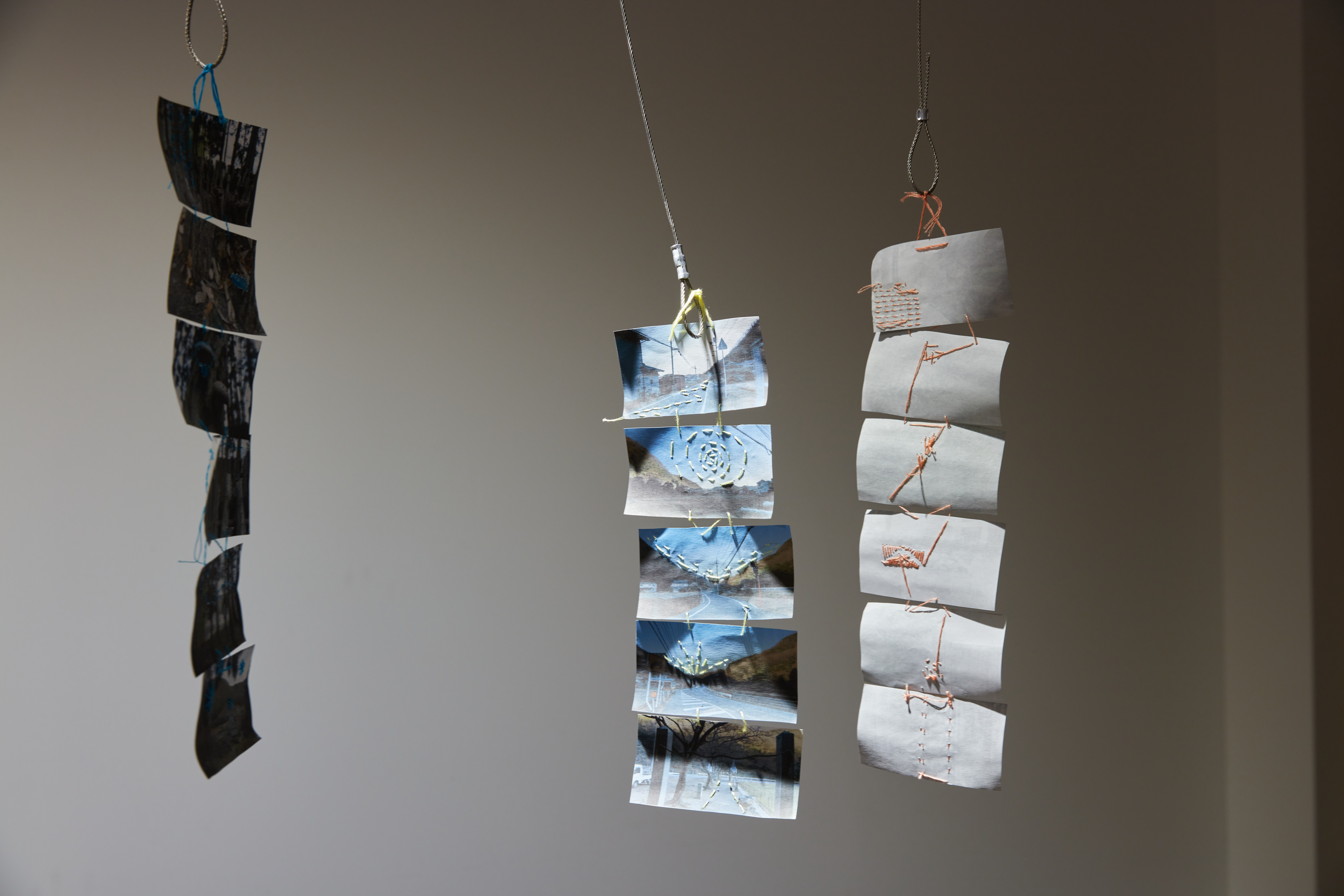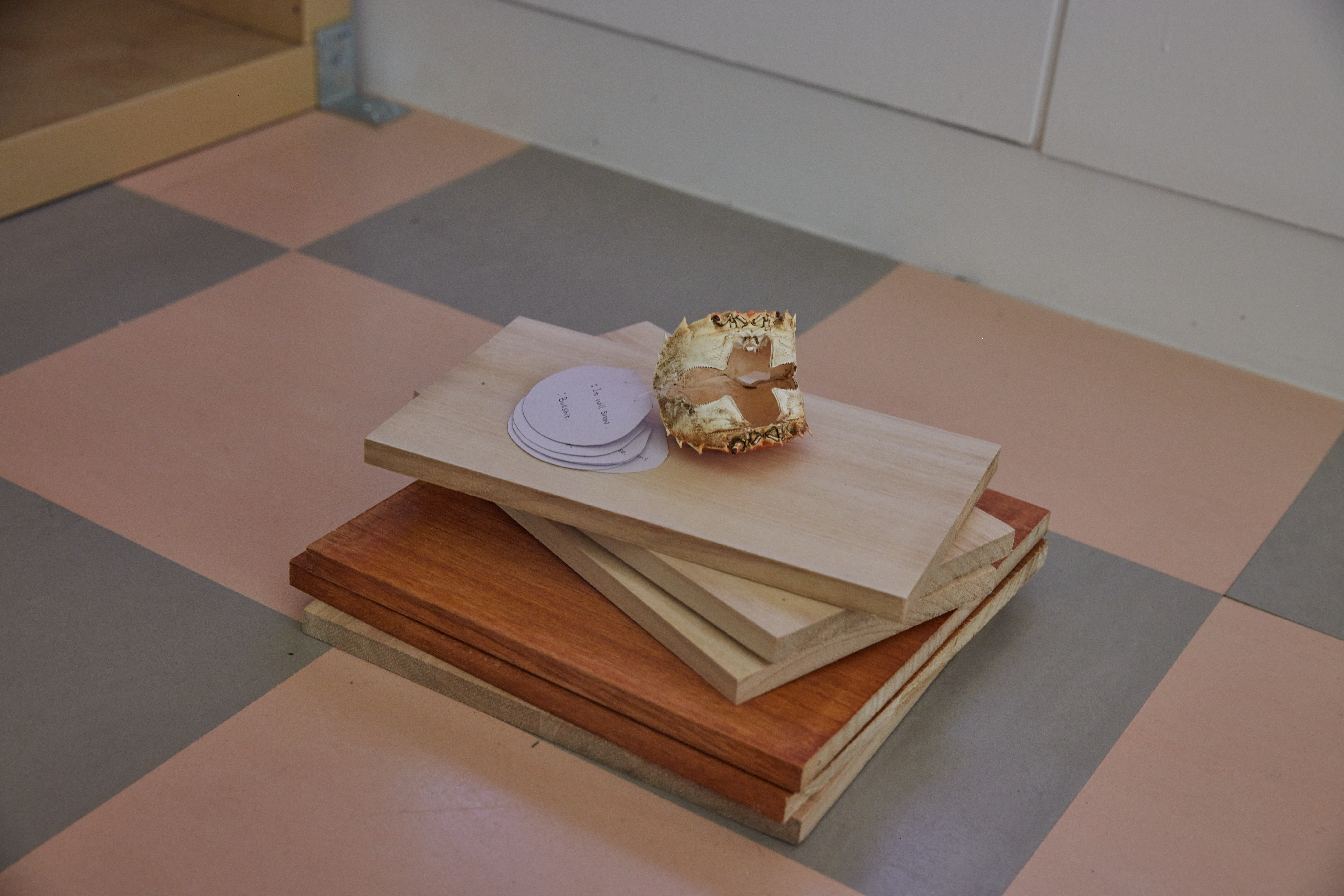More Than More Than Human
As humans, we are constantly negotiating our place within a complex web of coexistence. Through a range of perspectives and practices, the artists invite viewers to consider how we might rethink our interactions with the more-than-human world. More than More than Human exhibition is part of a continuous exploration into our evolving relationship with the non-human world. Each work tells the artist’s story and thinking about related to the central question, “What does it mean to live alongside, and in relation to, other forms of life?” With the join of artists with various backgrounds and research interests, this exhibition presents a dynamic collection of video art, installation, painting, sculpture, and photography.
January 27-31, 2025
waseda eco art studio
waseda eco art studio



Works








Stitching Tomorrow (2025)
Xiaojing WANG (Yaya)
83.5 cm x 53 cm, color and dirt collectors, cotton thread, gift box, plastic bottle cap
A large cloth pieced together from everyday laundry color and dirt collectors, featuring a hand-stitched board game. The game is designed to help children around the world learn about the Sustainable Development Goals in a simple and child-friendly way.
Xiaojing WANG (Yaya)
83.5 cm x 53 cm, color and dirt collectors, cotton thread, gift box, plastic bottle cap
A large cloth pieced together from everyday laundry color and dirt collectors, featuring a hand-stitched board game. The game is designed to help children around the world learn about the Sustainable Development Goals in a simple and child-friendly way.



Meika MIZUNO



Market of Heaven (2024-2025)
Ning ZHOU
08:38
From where I am from, people regard food as heaven. Thus, the wet market becomes the market of heaven. Strangers, workers, farmers, housewives, and young people get connected through crabs, green onions, corn pork rib soups. At the market of heaven, there are episodes of food, farmlands, and families.
Ning ZHOU
08:38
From where I am from, people regard food as heaven. Thus, the wet market becomes the market of heaven. Strangers, workers, farmers, housewives, and young people get connected through crabs, green onions, corn pork rib soups. At the market of heaven, there are episodes of food, farmlands, and families.


Takumi ITAGAKI


Ikuto SHIOSAKA


Kanae HATANO


Himeko OTAKE
Journey on the Way
Ning Zhou This March, I took a trip to Tokushima. I stayed at a local farm, making friends with seedlings and dancing bees, learning about how to deal with the vegetables, the land, the countryside, and so much more hidden beneath the surface of the soil in all different colors. I joked with a friend that I needed to take breaks from Tokyo now and then, just to keep a proper distance—so I wouldn’t run out of love for it. Maybe it’s about stepping outside of a deeply embedded, unconscious bubble which is centered around high-tech competition, digital socializing, and consumer culture.
None of these mattered on the farm in Tokushima. None of these are a necessity for us. I realized that when I was planting broccolis on a patch of uncultivated land. The farm owner, Shiba-san, reminded us to leave enough space between the plants—“They need air,” he said, “or they’ll scream, just like humans.” If one screams, the others hear it, and they all grow in suffering. Air, water, space. What broccoli needs is what humans need. Not just broccolis, there are also radishes ready to be harvested, trees about to be cut, and earthworms found under the carrots. What do they need? Do they scream?
One afternoon, I took a long walk through the countryside, alongside the fields. There’s a protected ancient tree in the village called “野神の大センダン” (Nogamino daisendan) standing right next to a local elementary school. It felt like the tree was watching, quietly guarding, coexisting with generation after generation.
We’re all on different kinds of journeys as we figure out our own stories about what it means to live with “more than human.” This exhibition presents trips to grandparents’ house among the forest, visits to wet markets back home, returns to familiar after-school roads from childhood and hidden neighborhoods in Tokyo. These journeys help re-learning and re-examining our surroundings. We are all, in our own ways, still on the way.
April 2025
None of these mattered on the farm in Tokushima. None of these are a necessity for us. I realized that when I was planting broccolis on a patch of uncultivated land. The farm owner, Shiba-san, reminded us to leave enough space between the plants—“They need air,” he said, “or they’ll scream, just like humans.” If one screams, the others hear it, and they all grow in suffering. Air, water, space. What broccoli needs is what humans need. Not just broccolis, there are also radishes ready to be harvested, trees about to be cut, and earthworms found under the carrots. What do they need? Do they scream?
One afternoon, I took a long walk through the countryside, alongside the fields. There’s a protected ancient tree in the village called “野神の大センダン” (Nogamino daisendan) standing right next to a local elementary school. It felt like the tree was watching, quietly guarding, coexisting with generation after generation.
We’re all on different kinds of journeys as we figure out our own stories about what it means to live with “more than human.” This exhibition presents trips to grandparents’ house among the forest, visits to wet markets back home, returns to familiar after-school roads from childhood and hidden neighborhoods in Tokyo. These journeys help re-learning and re-examining our surroundings. We are all, in our own ways, still on the way.
April 2025